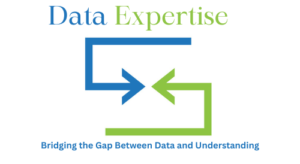Upon gaining insights into advanced data mining techniques, we can seamlessly transition to exploring data analysis tools and methodologies. During the data mining phase, we extract essential information from web sources, often in an unrefined state. This raw data may introduce unwarranted complexities during the data analysis phase, necessitating a crucial step known as “Data Cleansing” for effective segregation.
What is Data Exploration & Analysis?
Data analysis is an intricate voyage through statistical and logical methodologies, wielded as potent instruments to illuminate raw data with profound insights, enabling informed and astute decision-making. This transformational journey is navigated through the adept utilization of data management techniques and a diverse array of cutting-edge data analysis tools. To embark on this transformative expedition, we begin by immersing ourselves in the intricacies of data analysis methods.
Data Analysis Methods
Data analysis encompasses two primary methodologies:
- Qualitative Analysis
This analytical expedition commences by leveraging the potency of inquisitive inquiries, delving deep into the realms of “why” and “how.” It draws strength from subjective judgments rooted in unquantifiable and elusive data, navigating through the territories of intangibility and imprecision. This analytical approach predominantly takes shape through textual narratives, occasionally augmented with multimedia elements, encompassing both auditory and visual dimensions.
- Quantitative Analysis
Typically, this genre of analysis revolves around numerical data, which can be conveniently represented through measurement scales, enabling further statistical manipulation and exploration.
Data Analysis Tools
A plethora of data analysis tools awaits at your disposal, each tailored to meet the specific needs dictated by data type and analytical requirements. Below, you’ll find a curated selection of “research data analysis tools” to aid you in your quest for meaningful insights.
- Excel
This tool is your go-to choice when dealing with vast volumes of data, effortlessly managed thanks to its array of compelling features.
- R & Python
These programming languages wield immense power and flexibility. R, for instance, is primarily harnessed for statistical analyses, such as normal distribution and cluster classification algorithms. Moreover, it excels in conducting individual predictive analyses, unraveling insights into customer behavior, spending patterns, preferred items based on browsing history, and a plethora of other valuable insights.
This programming language is a powerful tool designed for data analytics and manipulation, offering seamless access to data from various sources. SAS has further enriched its offerings with an extensive suite of customer profiling products tailored for web, social media, and marketing analytics.
Data Management
Data Management constitutes a comprehensive process encompassing the acquisition, validation, secure storage, protection, and adept processing of essential data, all meticulously orchestrated to facilitate its optimal utilization by end users.
In a world where data often arrives in an unrefined state, the role of Data Management emerges as the crucial guardian tasked with meticulous segregation and filtration, ultimately leading to its refined representation. As emphasized earlier, Data Integrity stands as an indispensable cornerstone within the realm of data management, its significance is elevated to a paramount level in ensuring the efficacy of these endeavors.
What is Data Integrity?

Data integrity embodies the relentless commitment to uphold the precision and reliability of data throughout its entire lifecycle. This unwavering dedication serves as a pivotal element in the conception, execution, and utilization of systems tasked with data storage and retrieval.
It’s essential to note that while data integrity shares a common goal with data security and data quality, they are distinct concepts, each with its own unique focus and significance.
Why Data Integrity is necessary?
Ensuring the data’s integrity establishes a steadfast guarantee that the information housed within a database will maintain its completeness, accuracy, and trustworthiness, irrespective of its storage duration or frequency of access. Moreover, data integrity serves as a formidable shield, safeguarding data against external threats and intrusions.



